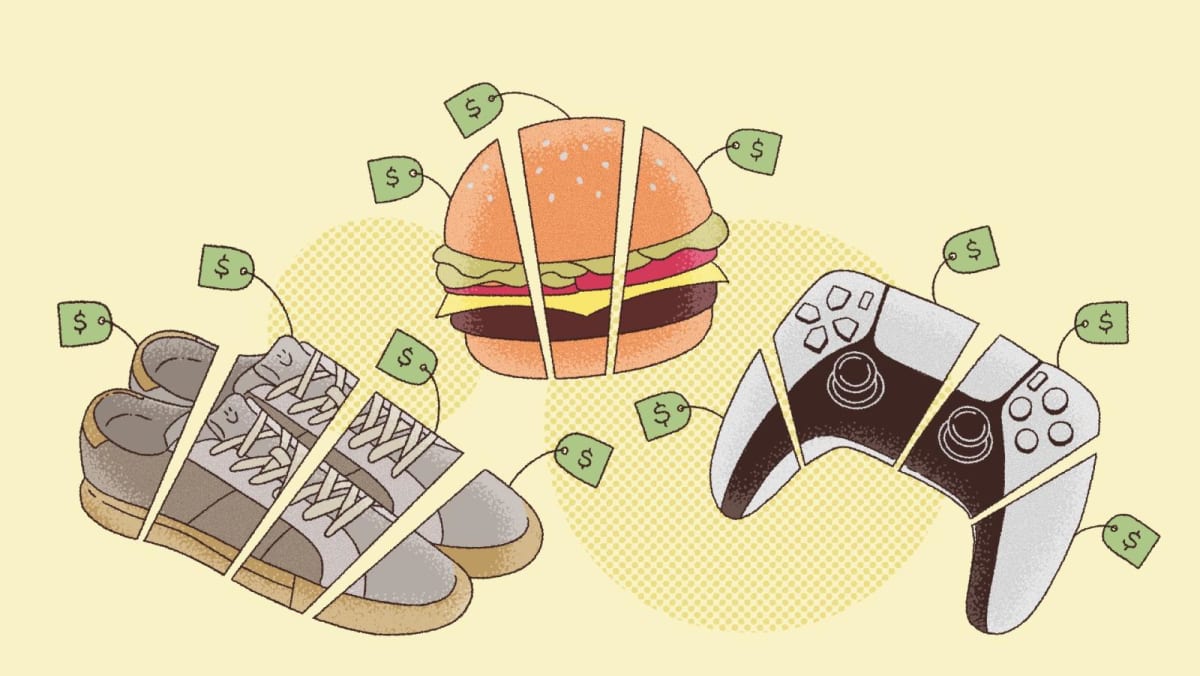Growing comfort with debt as more young Singaporeans use buy now, pay later service for daily spending

Like Ms Chen, who furnished her home with BNPL instalments, Mr Darius Ng is also using BNPL to fund his furniture and wedding expenses.
The 32-year-old senior project and events executive said he uses BNPL mainly to avoid running out of cash, as he did not find paying for big purchases all at once to be practical.
Although Mr Ng finds BNPL a convenient way to spread out his payments and he always makes sure to pay on time, he thinks the service has influenced his spending habits for the worse.
“The ability to pay over time reduces the fear of how costly big-ticket items are, so I might have bought more than I actually need for my house and wedding,” he said.
“It can be risky for individuals who don’t manage their finances well. As a regular user, I keep notes and use an expense-tracking app to monitor my spending, too.”
Meanwhile, special needs educator Nurin Insyirah Yusran, 24, said she plans to stop using BNPL once she has achieved more financial stability.
She has just started working full-time and uses BNPL for cosmetics and electronic gadgets, making it easier to manage payments of a few hundred dollars.
“BNPL makes spending easier. It’s like I’m spending invisible money, so it’s quite scary, and if you are not aware of your expenses, you can easily overspend, especially those with a shopping addiction.”
HOW TO PREVENT ACCUMULATING DEBT
Default rates and late repayments are generally low here, based on what the major BNPL providers here told CNA TODAY.
Atome said that the most common reasons for late payments on its platform are invalid or expired credit and debit cards, and failure to add a debit or credit card or payment account for auto deduction.
Still, experts interviewed by CNA TODAY cautioned over the pitfalls of these services, stressing the need for financial literacy and responsible spending to avoid accumulating too much debt.
SMU’s Dr Ghosh said he is concerned that young adults may become accustomed to borrowing early in life.
This means they may develop a habit of accumulating debt, potentially extending to credit card debt as they grow older and gain greater access to unsecured credit, he added.
“My main advice is to get sound financial literacy, understand needs and wants, budget and track expenditure. This will automatically make people aware if or when they need to finance their expenses using BNPL,” Dr Ghosh said.
He also advised consumers to follow a 50-30-20 strategy of spending: 50 per cent on essentials, 30 per cent on discretionary items and 20 per cent on savings.
“And most definitely, try to avoid financing too many short-term consumption discretionary or luxury goods with BNPL, even bubble tea.”
The golden rule is never to borrow more than you can pay back, said Mr Aaron Chwee, OCBC’s head of wealth advisory.
“BNPL may give the illusion that the purchased item is affordable because you can repay it in smaller amounts over time … Even so, this will impact your monthly cash flow, hinder your financial goals, and cause a debt trap.”
Mr Chwee also advised users to be mindful of interest rate charges and late fees that may be applied to the borrowed amount.
Mr Steward Thum, financial services associate director at wealth management firm PhillipCapital, said BNPL can be a smart option if it frees up cash for high-priority expenses or investments that generate higher returns.
“For example, you may earn interest on the amount that can be deferred and kept in your savings account for a few months, making financial sense in certain situations,” he said.
“However, the savings from ‘paying later’ vanishes if it leads to spending beyond your means or purchasing items you do not truly need.”
Mr Thum also advised users, regardless of whether they have credit cards, to use BNPL services with financial discipline and awareness of potential risks.
Users without credit cards should set a clear budget, track their instalments and avoid using BNPL for impulse purchases.
For users with credit cards, Mr Thum emphasised the importance of avoiding the simultaneous use of BNPL and credit cards, which could lead to unmanageable financial obligations.
Credit cards often come with hefty interest rates applying to balances not paid on time.
In response to CNA TODAY’s queries, the Monetary Authority of Singapore (MAS) said that BNPL transactions remain as a small fraction of consumer payments.
In the second half of 2023, the total value of BNPL transactions was about 1 per cent of the combined value of credit card and debit card payments here.
The authority said that although it does not regulate BNPL firms, those operating in Singapore have committed to the BNPL code of conduct, developed under its guidance and administered by the industry.
“Under this code, BNPL firms commit to safeguards, including to suspend the accounts of BNPL users who have defaulted on their repayments, not to compound interest or fees, and not to pursue bankruptcy proceedings against customers who have outstanding payments,” MAS said.
“BNPL firms are also not allowed to extend more than S$2,000 in credit to a customer unless they perform an additional credit assessment. These measures limit any debt build-up and mitigate the risk of consumer over-indebtedness from BNPL use.”
BUY NOW, REGRET LATER?
Ms Sandra, the 23-year-old student who spent S$500 a month using BNPL, is now well aware of the danger of one’s finances easily getting out of hand.
Reflecting on her expenses last year, she recalled how certain circumstances would prompt her to use the service in the name of convenience.
“My internship required long commutes, up to four hours every day (using public transport). So, I often felt too tired to cook or buy food from nearby hawker centres.
“Ordering food online and hailing a ride became a habit, and I stopped considering more practical or cost-effective options like buying groceries,” she said.
Ms Sandra said it finally hit her last August that she should assess her finances after a serious discussion with friends on managing money as they navigate adulthood.
“After calculating my total spending for the first eight months of the year, I realised my BNPL expenses amounted to about S$3,700.”
With hindsight, Ms Sandra lamented that the money could have been used more wisely, such as on groceries and driving lessons. She has since stopped using BNPL.
As for Ms Chen, who allocated 90 per cent of her take-home pay to BNPL repayments last year, she said she realised how BNPL could adversely affect her if she were not careful or disciplined enough.
“I was living pay cheque to pay cheque for three to four months, but it stopped me from spending unnecessarily. I knew exactly how much I had left to spend for the month and I really stuck to it.”
Asked if she had any advice for first-time BNPL users, she cautioned against allocating more than 50 per cent of one’s monthly salary to BNPL instalments “unless you’re prepared for some tough times”.
“And if you can’t afford something, don’t buy it. Don’t spend money you don’t have unless it’s truly necessary.”
Editor’s note: This article previously stated that Lendela’s data recorded an 18 per cent rise in loan applications from middle-class millennials earning S$48,000 to S$84,000 from 2022 to 2024, with a 30 per cent jump among those earning over S$84,000. That is incorrect. The figures referred to the share of applications, not the absolute number of applications. We apologise for the error.
The article has also been amended following a clarification by the Singapore FinTech Association on the BNPL safeguards that apply when there are instances of overdue payments.
Source: CNA















